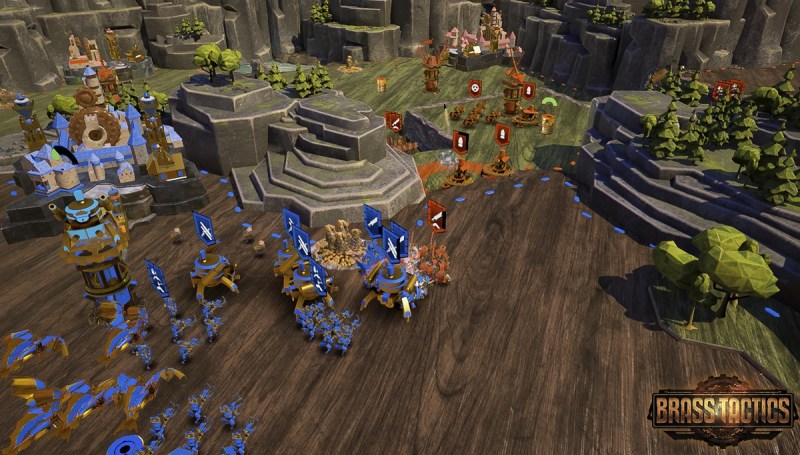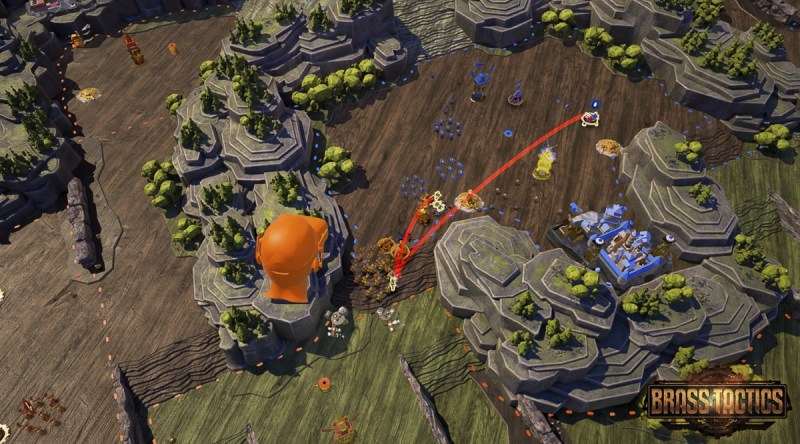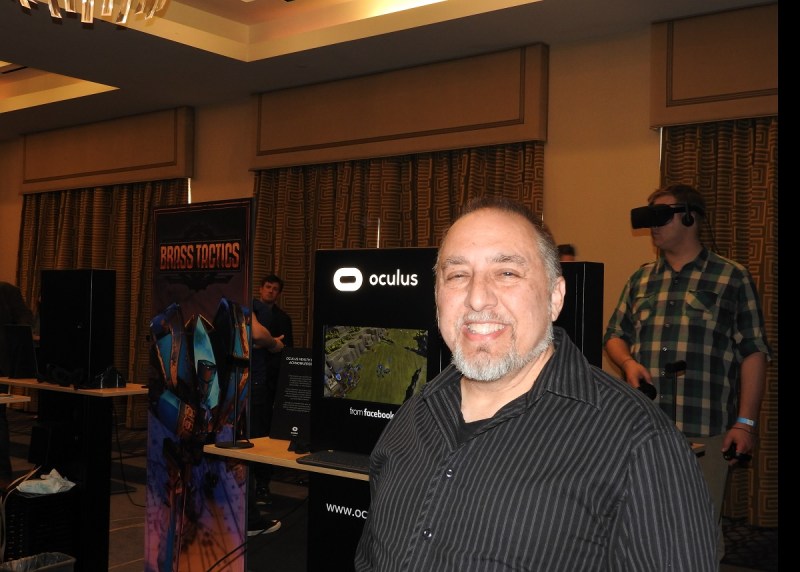Brass Tactics is a real-time strategy game in virtual reality. Coming soon for the Oculus Rift and Touch, it makes you feel like you’re in the middle of a virtual tabletop game with castles and fantasy armies.
The art style is pretty, but it’s not super realistic. The hills are stacks of blocks layered on top of each other, like in a relief map. I played a round of the Oculus exclusive game at a recent preview event held by publisher Oculus Studios and developer Hidden Path Entertainment. It looks a lot like the clockwork map in the introduction for Game of Thrones television show, which was the inspiration for the game.
RTS on VR is a work in progress. You can’t play massive battles like Ashes of the Singularity in VR, because it’s simply too complex and has too many details. That’s why Mark Terrano, creative director at Hidden Path Entertainment, took a measured approach when figuring out how much detail to put into each scene. Right now, the game has about 10 squads of 10 soldiers each per map.

Above: Flying units on the attack in Brass Tactics.
By contrast, a PC game could easily have about 100 squads on the battlefield at any given time. This means that Brass Tactics has more of a tabletop board game feel, and that’s how Hidden Path designed its user interface. As commander, you feel like you’re a character in the middle of that table. The level of abstraction is more detailed than chess, but the actions and movements are simple.
“It feels like you’re in there commanding those forces. You have a different relationship with the units,” said Terrano, who worked on RTS games such as Age of Empires II on the PC. “After working on flat screen RTS for so many years, this feels really different. We got a taste of that when we did Defense Grid, but I really wanted to have armies. When you get that epic feel as you’re commanding—you just look around and see the biggest diorama battle you’ve ever had.”
Commanding the units is far different from using a mouse and keyboard on a PC. You use the Oculus Touch control to reach out with your hand and touch a unit. Once you do that, you can move your hand over other units and activate them, so that you can get all of the units to do the same thing. You can point them to a part of the battlefield, and a pointer will show the location. When you release the trigger on the control, the units will move to that location. If you point at a building or enemy unit, they will attack it.

Above: Hidden Path’s Brass Tactics lets you navigate through forests and mountains.
Once you get good at this, it becomes like second nature. As I started out, I picked up a building from the edge of the table and placed it into my city. That gave the city the ability to produce veteran soldiers. Then I pointed at an infantry tower and began producing infantry units. Then I touched a unit and directed it to take over an icon for a region. Once it did so, the region turned blue and I owned it. It then started contributing resources to my faction. And I was able to create more units, such as flying units, cavalry, and artillery.
I could have stayed close to my city and continued to make units. But that wouldn’t have accomplished much. I had to reach out with my hands and grab the terrain. I pulled it toward me and moved to another section of the map. From there, I could see with a different perspective. I could see what was behind some hills and what was on the other side of a forest. From there, I was able to reach back to the units at my base and send them deeper into enemy territory.
I seized multiple territories at once, and send some troops to attack the enemy. They were victorious, and then I marched them toward the enemy capital. But as I turned to my right, I noticed that the enemy had sent some troops toward my base through a different valley. I had to stop those units and then sent my own directly at the enemy’s walls. Fortunately, my firepower overcame the enemy’s and I won the battle.

Above: Brass Tactics has a tabletop game feel.
It was a swift victory, but the enemy’s own attack was a good lesson. I realized that, in contrast to a typical RTS on the PC, I couldn’t see everything from a bird’s-eye view. Rather, it was almost more like seeing things from a 3D space, and that sneaking units beyond your point of view was a tricky tactical maneuver.
“Because there’s no fog of war, we designed obstructions in the maps. You have to go over and look at some things. Some maps have weather, mists, that obscures the lowland areas. You can’t see when units go in, or you’ll be a bit surprised when they come out,” Terrano said.
Terrano notes this is more like “fog of attention,” because you can’t look everywhere at once, even in VR.
Hidden Path has been working on the game for 14 months, and now it is set to debut later in 2017 on the Oculus Rift and Touch platform on the PC. The game will have a single-player campaign, multiplayer play, and cooperative play as well. So far, the game has 15 different maps, with biomes such as forests or deserts or ice.
Terrano said that the team is targeting sessions that last about 20 or 25 minutes, as that seems the most comfortable in VR.

Above: Brass Tactics creative director Mark Terrano of Hidden Path.

